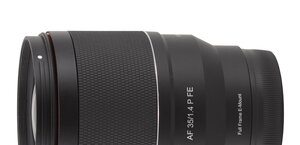Viltrox AF 50 mm f/1.8 FE / Z
5. Chromatic and spherical aberration
Chromatic aberration
When it comes to longitudinal chromatic aberration we can complain a bit more. The aberration is visible without any problems at the maximum relative aperture; mind you, this kind of aberration could be corrected properly even by old, simpe double gauss constructions without special elements inside. Why can't the 11-element Viltrox, with low dispersion glass, control it properly? Search me. |
Fortunately when it comes to lateral chromatic aberration the situation is much better – just look at a graph, shown below.

Please Support UsIf you enjoy our reviews and articles, and you want us to continue our work please, support our website by donating through PayPal. The funds are going to be used for paying our editorial team, renting servers, and equipping our testing studio; only that way we will be able to continue providing you interesting content for free. |
- - - - - - - - - - - - - - - - - - - - - - - - - - - - - - - - - - - - - - - - - - - - - - - -
The level of the aberration is negligible no matter whether you take the edge of the smaller or the bigger sensor into account. It means in real life this type of optical aberration won't disturb you at all.
| Nikon Z7, RAW, f/1.8 | Nikon Z7, RAW, f/5.6 |

|

|
Spherical aberration
In first photos of this chapter you can notice a slight focus shift effect. After stopping down the aperture from f/1.8 to f/2.5 the depth of field moves toward greater distances.Also the appearance of out-of-focus circles of light before and behind the focal point confirms that effect. Apart from a series of concentric rims it is clear that the centre of the circle before the focus is distinctly lighter than the centre of the circle behind the focal point.
As you see, in this category we can't praise the lens either.
| Nikon Z7, f/1.8, before | Nikon Z7, f/1.8, after |

|

|






